You may have unknowingly parked next to, landed in a plane, or drove past miles of bioswales in your life and not even knew they existed or more importantly their actual purpose. Bioswales are large areas designed to both collect and treat stormwater runoff from impervious surfaces. With increasing regulations to not just reduce stormwater runoff, but also to improve the water quality, bioswales have become an effective tool for this purpose.
Courtesy of https://theray.org/tech/bioswales/
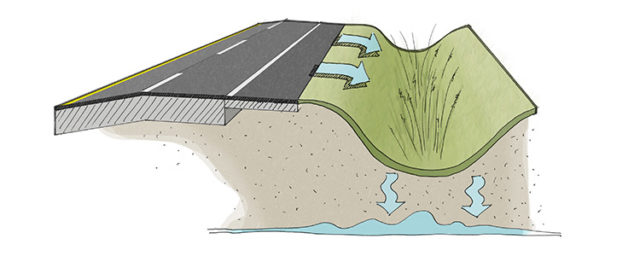
Keep in mind that here in Georgia and Metro Atlanta that the majority of precipitation events are 1 inch or less. Therefore, those are the events most regulators, environmental groups, and engineers design plans to capture and return the water to the landscape in a manner that mimics nature. Natural landscapes, such as forest, allow the water to infiltrate through the soil and either be stored, taken up by plants, or move as groundwater before recharging a downslope stream. Impervious surfaces (roads, roofs, etc.) prevent this from occurring and water must be transported horizontally across the surface.
This stormwater is now being collected along parking lots and roads into bioswales. Bioswales use a combination of vegetation and most importantly engineered soil placed on a specific grade to collect water and allow it to infiltrate into the soil and/or be taken up by the plants for evapotranspiration. The soil is designed to filter the water from pollutants while providing plants a media to grow by using the water and excess nutrients filtered from the runoff.
Think of the soil as a sponge that soaks up water, stores some of it for plants to use, and allows the excess to recharge the groundwater below. That’s the coolest ditch you ever saw, and some of the plants can even make the landscape look amazing! So next time you run through the parking lot when it is raining, look where the water is flowing because it might just be into a bioswale.
For further in depth reading and if you are interested in learning more about stormwater here in Georgia check out the Georgia Stormwater Management Manual at:
https://cdn.atlantaregional.org/wp-content/uploads/operation-and-maintenance-guidance-document.pdf/
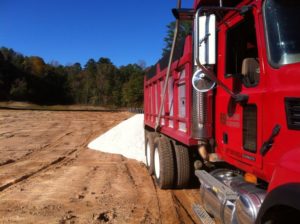
Bring vacation home and make your back yard or lake front property look and feel like a tropical paradise with beach sand. There are many properties to consider when selecting sand for your beach including color, gradation, cleanliness, and pricing. We actually offer several options of gradation and color, but regardless, all of our sands are washed to reduce unwanted contaminants.
As for gradation, a beach with a finer grain type of sand will feel more like the traditional beaches of the Florida Panhandle or the Caribbean, with a soft touch. However, the smaller the size particle of sand the more likely it is to erode, so if you have a lot of wave action from nearby boaters you might consider a medium to coarse grade of sand to minimize erosion. River Sand, Inc.’s beach sand can meet your color preference too, from bright white to an eggshell white (for those eyes that might be a little light sensitive or for those folks who want a more natural look).
Before you order a load of beach sand you may also consider a few other factors. First, consider the topography of the area where you want to place the sand and make certain that storm water runoff is directed away from the beach to reduce the potential of your sand washing away.

If you have questions about building your dream beach or just a place for the kids to play, please call River Sand for more information.
Remember that River Sand, Inc. can meet your beach sand needs, and our trucks can deliver any amount to any place in North Georgia and Metro Atlanta. We have even helped build an underwater beach basketball court so let us know what you want to do!
River Sand consulted and supplied sand for an underwater basketball court for a kid’s camp. The creative idea was dreamed up as a way to improve the experience for campers. The lake level was lowered and graded initially. A geotextile fabric was then staked down to separate the lake bottom from the sand. Finally, an excavator placed the beach sand to grade to create the underwater court. The result is a little slower paced basketball game, but really fun!
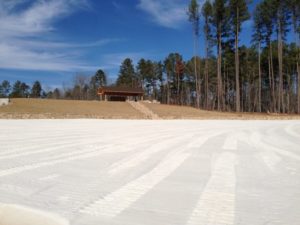
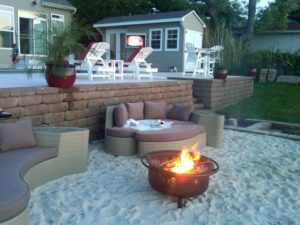
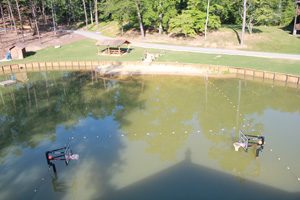
How to topdress your own lawn…in 8 easy steps (ok it does require some physical activity)
So you have heard the benefits of topdressing your turfgrass already, and in your boredom at work you are researching the plan to topdress your lawn this weekend. Obviously you could pay a professional but you would rather save some money and get a little exercise while making your lawn look great. Here is the basics to topdress your lawn yourself:
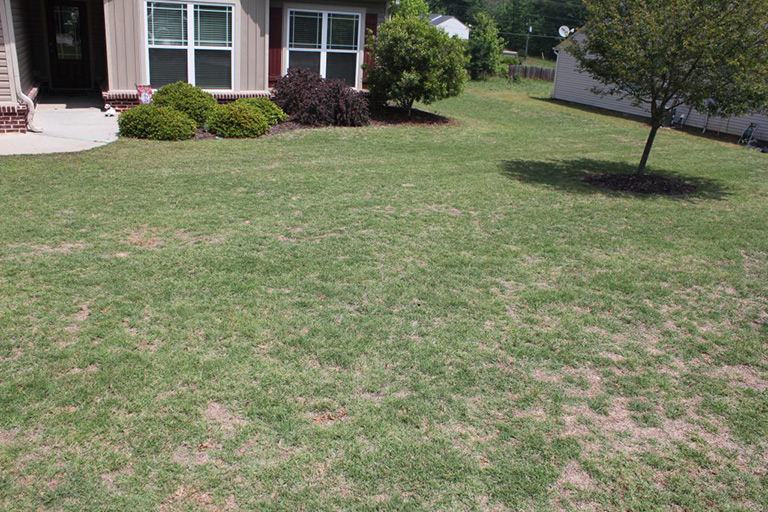
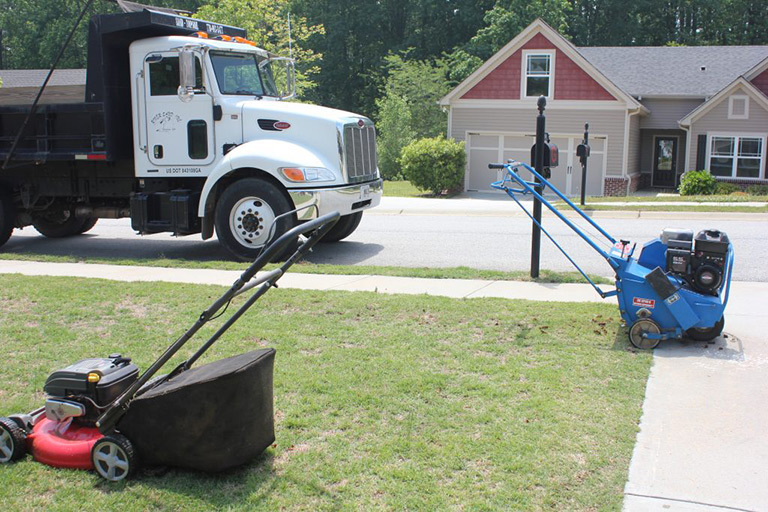
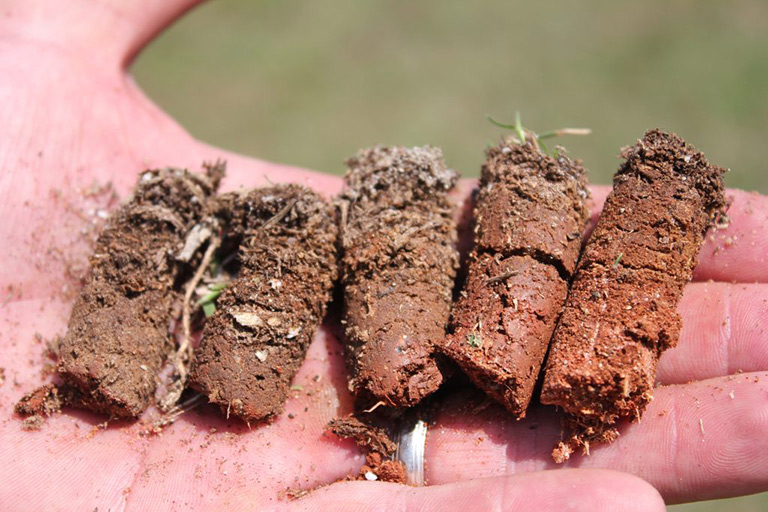
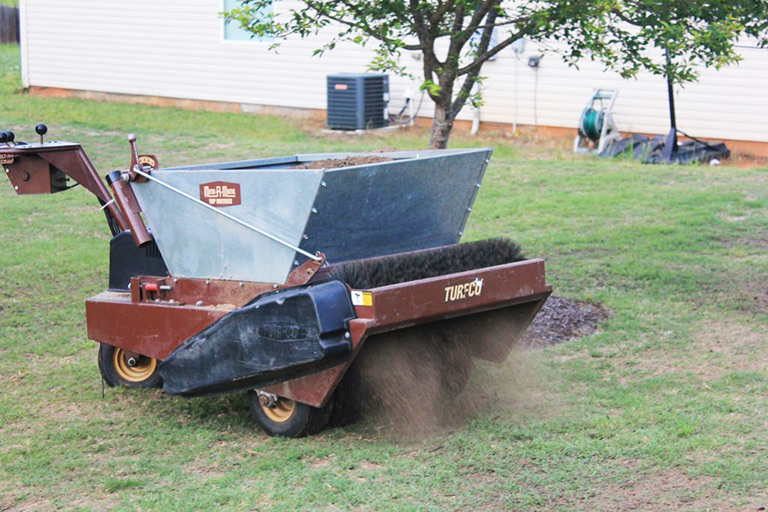
Now you know that your neighbors will be jealous once your lawn looks awesome, so this is your warning that you better be ready to tell them who to call or you may be doing it again next door. Seriously, just get them to split the cost of the load of sand delivered with you so you can have help and save money to start with. This is work but have a good time and enjoy your time outside!
If you live here in Georgia and tried to grow any type of plant, then you know about our notorious Georgia red clay (dun-dun-duhhhh).
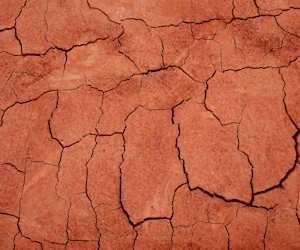
It is beautiful but too often the contractor grades out your home and at the same time strips the topsoil, leaving only the poor sub soil behind. Don’t worry, it was left totally compacted too by the time the house was completed. Last but not least your poor sod gets thrown on top of the nutrient and organic matter deficient, compacted dirt. Good luck trying to keep your lawn healthy. It will take more water, nutrients, herbicides, pesticides, and more to keep it looking up to par.
If by chance you actually do have good soil beneath your turf, keep reading because topdressing will maintain the healthy lifestyle of your turf. After all, good soil conditions are like similar to living a balanced lifestyle ourselves. When you have the proper nutrition, water, and exercise then you will look and feel better and have less weeds in your life. It’s more work to get poor soil back into shape than to start with it from the beginning but topdressing can help in either situation.
Just like other plants your lawn turfgrass needs light, air, and water. A deep healthy rootzone helps the plant thrive even through stressful conditions, such as a drought or extreme temperatures.
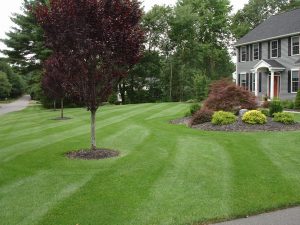
Unfortunately, compacted soils with a high clay content (the typical stuff around here) make it difficult for roots to penetrate deep into the soil (which lacks nutrients and water anyway). You can take a sample by cutting out a small patch with a shovel or knife. If you notice the roots are less than a few inches we need to to help them out. The compacted clay also prevents air and water from infiltrating into the soil so only the top portion of the soil gets any moisture before the excess water just runs off the lawn.
The second issue that plagues turfgrass, especially healthy lawns, is thatch build up. Thatch is basically decomposing organic matter developed by old stolons and rhizomes from turf growth. It’s important to note that grass clippings do not contribute to thatch, so don’t worry about that. Thatch collects between the leaves (green part) and the roots, so you really don’t see it without digging down to look at a sample of turf. Too much thatch actually prevents water and air from getting through and down to the roots.
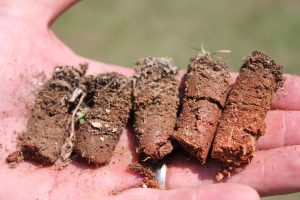
Soooo, two things prevent water (along with nutrients) and air getting deep into the soil where it can last for days to continue to last between rainfall (or irrigation events). Those two things are compacted clay soils and thatch. The solution is to core aerate and topdress.
Core aeration pulls plugs of dirt and thatch out of the profile and leaves them up on top. Topdressing with sand [why use sand? read this] provides an amendment that reduces compaction and allows water and air to go deep into the soil. Dragging the plugs back into the turf while you drag the sand is fine. The additional air getting to the rootzone will help the excess thatch decompose properly as well. Dethatching is another process that may be required if thatch is too excessive.
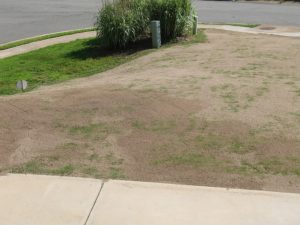
As you may already know, you should only cut your grass no more than a third of its height at a time. Often you break this rule when your lawn is not level and has humps or holes. When the mower goes over these rough areas it scalps (cuts the grass too low) the grass and leaves only the tan/brown stems with no green leaves. It looks terrible and is not good for the turf health either. Topdressing in these areas smooths it up so that you are left with an even cut every time and sweet green grass. You know the kind you look out the window and say wow look at my lawn!
If you are ready to get started or have questions please feel free to contact River Sand, Inc. for help.
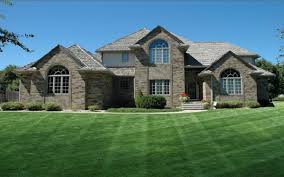
You take pride in your home and one of the first things anyone sees of it is your lawn. Green, lush and fertile should be your first goal. It’s the envy of the entire neighborhood. Your secret? Topdressing. For new homeowners out there who want to get in on the action, I’m going to explain the power that topdressing can give them.
Topdressing is a process in which you spread a new layer of soil on your lawn to improve its overall health.
Thatch is a layer of organic material located above the surface of the soil. Topdressing is applied to minimize excessive thatch accumulation and the associated problems.
Topdressing promotes healthier roots by allowing air and water to reach them easier. The result of topdressing is a new and fresh lawn, void of those dead, brown patches, overgrown areas and weed spurts. Topdressing helps create healthy, consistent lawn growth.
There are several materials to topdress your lawn. The majority of professionals use a quality natural sand. Some prefer a mixture of ingredients including sand and peat, sand and loam (type of topsoil), or sand and compost. The sand/compost mixture often adds sand for improvement of soil properties, and compost adds value as organic matter to the soil. The safest measure is to find a topdressing material mixed specifically with lawns in mind from a professional supplier.
Applying topdressing to your lawn is simple if you remember a few key things. First, the topdressing needs to penetrate the lawn’s surface, which is easier if the lawn is mowed very low for bermuda grass lawns.
If the soil is compacted, it may be necessary to core aerate the soil first using a lawn aerator to remove plugs about two inches deep. This is commonly seen on golf courses and areas with extremely firm soils.
After the aerating process, spread the topdressing evenly over the entire lawn using either a topdresser, spade, or spin spreader that evens out the application.
Lastly, go back over the lawn and make sure that the mixture has gone into the soil and isn’t just lying on top using a drag or other method. It’s crucial that the topdressing penetrates into the soil and is spread evenly to create a level surface. The level surface will help prevent future scalping with the mower.
Riversand Inc. is your local expert on lawn topdressing. We’ve got everything you need to keep your lawn looking its best all year long. Give us a call today at 877.499.7263 or visit us online at www.riversandinc.com.
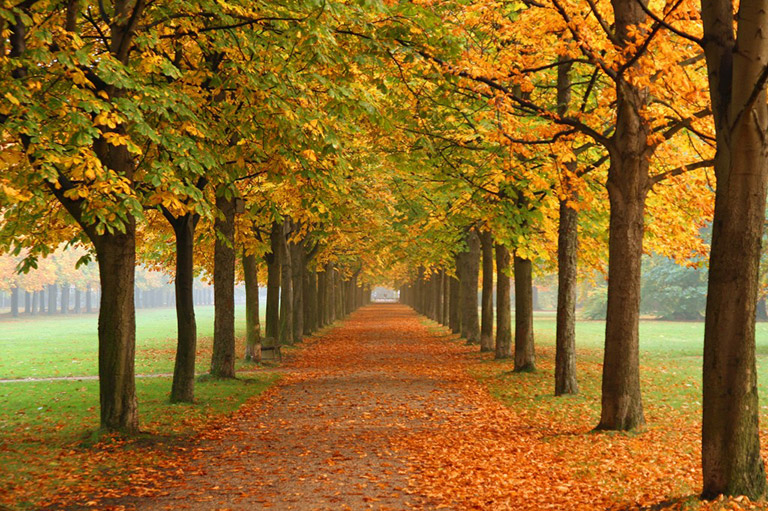
The year is winding down, the weather is gorgeous, and you think you’re done with landscaping for the year … but you’re not! Fall is the right time to get your yard prepared for the harsh winter. Follow these easy fall lawn care tips to ensure your lawn lasts the winter and brings you a beautiful spring!
The fall months are essentially the winterizing months for your lawn. They are preparation months and require more unique work than during the spring and summer. But if you want to be the envy of all the neighbors, and have that lawn that’s ready to emerge from the winter, take the time now to do it properly.
Grass is a plant, and as such, it needs sunlight to grow and flourish. Fall includes leaves falling, so it’s easy to see how one affects the other. Have you ever seen a lush green field in the middle of the woods? No? There is a reason for that. So rake the leaves and let your grass breathe and bask in the of the last warm days of the year.
Aerating is an important process in lawn care. By poking holes in your yard with a quality lawn aerator, you ensure that sunlight, water, and air penetrate below the surface and nourish the root system. The results are healthy blades of grass with robust stems ready to withstand the cold. Also, topdressing is a good idea at this time to control the accumulation of organic matter leading to excessive thatch and unhealthy growth.
Beef up your lawn by reseeding it before it gets too chilly. This is a great time to provide support to the lawn system by adding new seedlings to the lawn. It also helps to fill in the bare spots that a summer drought may have left or that aeration made room for.
How else will seedlings get their start? Fertilizer is essential for growth. Be sure to check out your local nursery for fertilizer that’s specially made for winter protection and your specific climate conditions.
The last mow of the season is different from other mows in that you will want to cut the grass a bit lower. In the summer, it’s better to keep the grass higher off the ground and allow it to maintain constant, sustained growth. This ensures proper weed control and keeps the grass stems robust and hearty. But as winter sets in, it’s better to cut a bit closer to the ground to protect grass from the cold and to keep it from being overexposed
Riversand Inc. is your local expert on winterizing your lawn. We’ve got everything you need to keep your lawn looking its best all year long. Give us a call today at 877.499.7263 or visit us online at www.riversandinc.com.